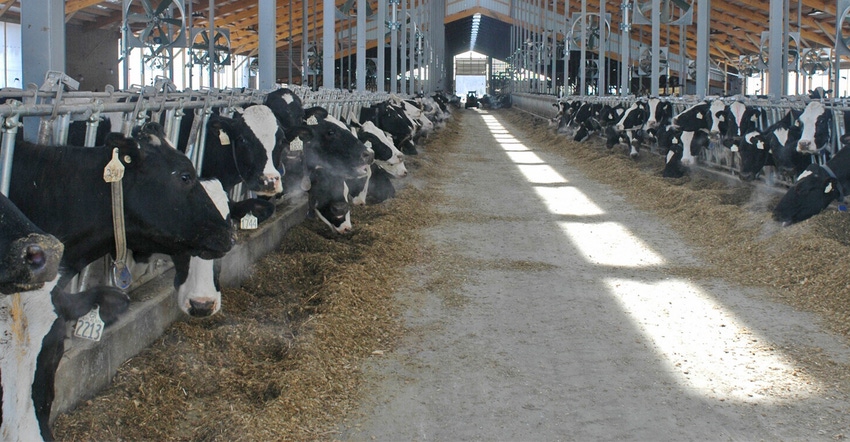October 12, 2017

For years, U.S. dairy farmers produced milk primarily to meet the demand created by U.S. consumers for fluid milk, cheese, ice cream, sour cream, cottage cheese, yogurt, cream cheese and other dairy products. Twenty years ago, less than $1 billion worth of U.S. dairy products were exported.
Since 2003, nearly half of our increased milk production has been exported. Dairy exports annually contribute about $15 billion to the U.S. economy, supporting 42,000 U.S. dairy farmers, 100,000 good-paying jobs and countless businesses that provide inputs all along the dairy supply chain, according to Tom Vilsack, former U.S. ag secretary who is now chief executive officer and president of the U.S. Dairy Export Council.
Vilsack spoke during a press conference at World Dairy Expo in Madison, Wis., on Oct. 4 to explain why dairy exports are important to improving the price U.S. farmers receive for their milk and why exports need to grow.
U.S. dairy exports have climbed from less than $1 billion in 1997 to more than $5 billion today. But our dairy export volume has plateaued in the past few years at about 15% of the U.S. milk supply, Vilsack said.
He believes we can grow that number to 20% by 2021. Why?
More milk
U.S. dairy farmers do an incredibly good job of producing milk — about 2% more this year than last year, even though dairy farm numbers in Wisconsin and throughout the country are declining. For the past two years, Wisconsin has been losing about 430 dairy farms per year; that’s more than one per day. On Sept. 1, the number of dairy farms in the Dairy State dropped below 9,000, to 8,970 — compared to 48,000 in 1977. Dairy farm numbers may be dropping, but cow numbers are staying steady at about 1.2 million in Wisconsin and 9 million across the U.S.
Another reason Vilsack believes exports are vital is there is so much opportunity for growth outside the U.S. Right now the U.S. represents 5% of the world’s consumers, and that number is expected to shrink to 3% in coming years. That means at least 95% of the world’s consumers live outside the U.S.
More consumers
Vilsack said population gains and middle-class expansion will continue to drive global dairy consumption in emerging markets at a faster pace than domestic dairy industries can match.
Over the next 15 years, Asia’s middle class alone will grow by 2.7 billion people, from about 525 million today to 3.2 billion, which is about 10 times the total current population of the United States.
“There is incredible opportunity for U.S. dairy with those middle-class consumers,” Vilsack said.
I couldn’t agree more.
The U.S. Dairy Export Council estimates rising consumer demand will increase globally traded milk powder and dry whey volumes by more than 1 million tons by 2021. Demand for other dairy ingredients — milk protein concentrate, lactose and specialized products like lactoferrin and alpha-lactalbumin — are projected to rise by more than 100,000 tons.
On the cheese side, Vilsack said demand for natural cheese at the food-service and retail levels (as well as pizza and other cheese types) will raise global cheese trade by more than 500,000 tons by 2021.
An ample, rising milk supply and a competitive, evolving product portfolio puts the U.S. dairy industry in a position to capture significant shares of those additional ingredient and cheese volumes.
Of course, increasing U.S. dairy exports hinges on ensuring market access. Ensuring market access covers everything from working to remove trade barriers to making sure U.S. dairy concerns are heard during trade negotiations like the ones currently underway with the North American Free Trade Agreement. We need to preserve the trade framework with Mexico and Canada that has delivered tremendous U.S. dairy export growth and make the U.S. dairy industry strong so dairy farmers can be paid a fair price for the milk they sell from their farms.
You May Also Like




